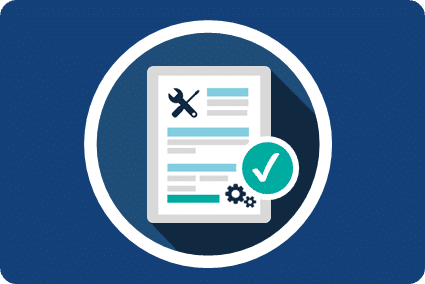BLOGS
Identifying If And When A Lease Contract Contains A Service Element

How To Identify If A Lease Contract Contains A Service Element
Although IFRS 16 will bring the majority of lease agreements onto companies’ balance sheets, there will be flexibility for lessees in that they will be able to isolate service elements of lease agreements and keep these off-balance sheet.
In order to keep the financial impact of IFRS 16 to a minimum, you may want to identify if a lease agreement contains service elements so it can be isolated and remain off balance sheet.
Look for elements of an agreement which form a service that can be sold in its own right (either by the vendor or if another party sells an identical service); a service which is allocated its own value, profit or risk; a service which has its own distinct function.
Once you have identified your agreements which contain a service element, you will also need to separate the two contractual elements from each other, and then account for them accordingly. Though there is a choice.
A company may separate the amounts paid for the lease and the services and then capitalise only the amounts paid for the lease.
The elements should be split based on their relative, stand-alone price. If this isn’t possible, lessees have a couple of options.
Alternatively, they can choose to not separate lease and service components and instead simply account for them together as a lease.
See more: Identifying a Lease: Navigating the New Definition of a Lease Under The New Standards
Your Options When A Lease Contract Contains A Service Element
Use An Estimate Based On Observable Information
It’s envisaged that many lessees will not be able to accurately determine the value that covers the lease agreement element and what covers the service agreement element.
In this instance, the lessee is permitted to use an estimate value. The estimate value must maximise the use of available, observable information, such as a price based on an existing agreement’s breakdown within the company or a similar contract from the supplier.
Use The Optional Practical Expedient
Under IFRS 16 it is necessary that a lessee separates lease components and non-lease (service) components within a contract unless a practical expedient is applied.
The optional expedient included within IFRS 16 permits lessees to make an accounting policy choice, by class of underlying asset, not to separate lease and non-lease components and alternatively, account for each lease component and any associated service component together as a single lease component. Effectively forgoing the exemption of a service element.
But lessees should note; whilst it is possible for service components to be treated as leases, an identified lease component cannot be treated as a service; this combination of elements is only acceptable one way.
“Not excluding service elements of a lease agreement may speed up the accounting process, but it will add extra weight to what goes on balance sheet.”
Furthermore, if an entity chooses to use the practical expedient for one class of underlying asset, they must use it for all other leases of this asset types; e.g. if a lessee decides to account for both the lease and maintenance components of a car as a lease, they will need to do that for all car contracts containing a lease.
Not excluding service elements of a lease agreement may speed up the accounting process, but it will add extra weight to what goes on balance sheet.
This highlights the importance of and the difficulties arising from the change in lease accounting that IFRS 16 brings. The intricacies and work involved with becoming compliant cannot be underestimated. Especially for those with any kind of sizeable lease portfolio.
It’s important that you are able to identify which of your agreements contain a service element, as this will affect how you treat your assets in relation to IFRS 16 lease accounting changes.
Part of the lease accounting changes under IFRS 16 is to make it clearer what is and isn’t a lease, which is why the definition of what constitutes a lease agreement is changing.
The new definition will replace IAS 17’s definition, as well as also superseding the guidance, within IFRIC 4, for determining whether an agreement contains a lease within it. The new definition is as follows:
“A contract is, or contains, a lease if the contract conveys the right to control the use of an identified asset for a period of time in exchange for consideration.”
Under the new standard, a lease exists when a customer controls the right to use an identified item, which is when the customer:
- has exclusive use of the term for a period of time; and
- can decide how to use it.
The definition has changed from (the soon to be expired) IAS 17 wording because of worries that it also captures service agreements and not just lease agreements. This would mean companies would incur extra financial impact, which is different from what IFRS 16 sets out to do - that is, to have lease agreements represented on balance sheet.
That’s One Step… Here’s How To Get Fully Compliant In Just 7 More
This is just one intricacy of the changes to lease accounting that IFRS 16 will bring. If you are interested in some further reading to help you become fully compliant, whilst also minimising the financial impact of doing so, check out this guide.
Innervision has produced a handy 7 Step Guide To Lease Accounting Compliance. Download it below.










